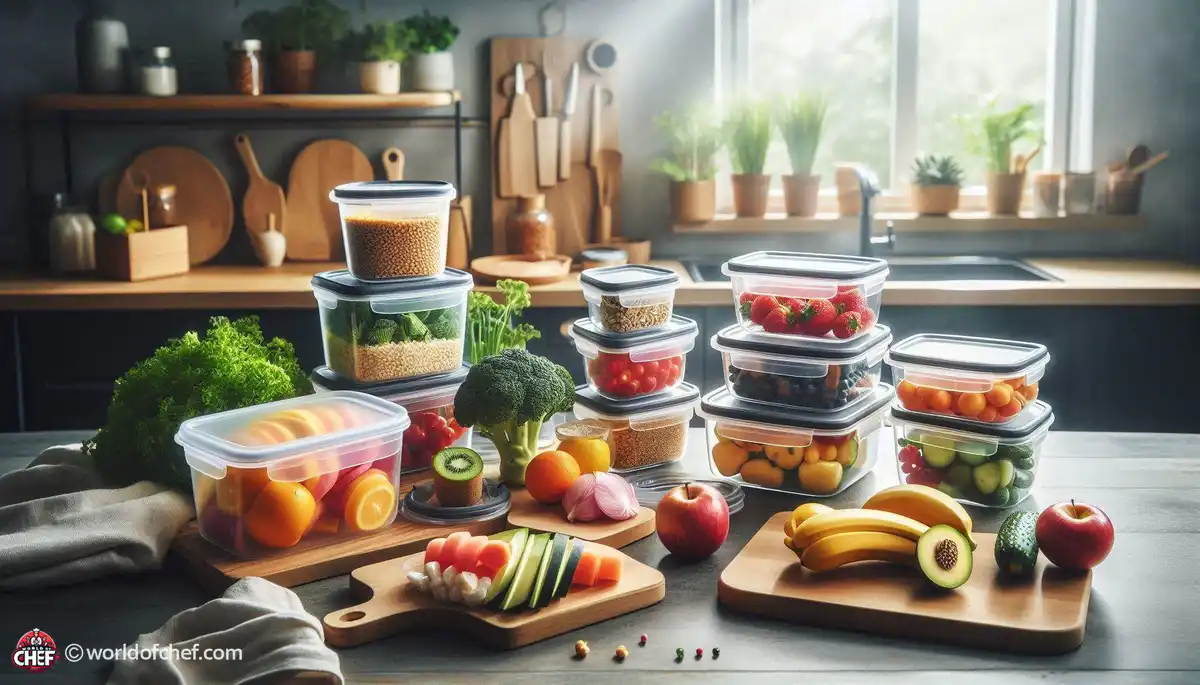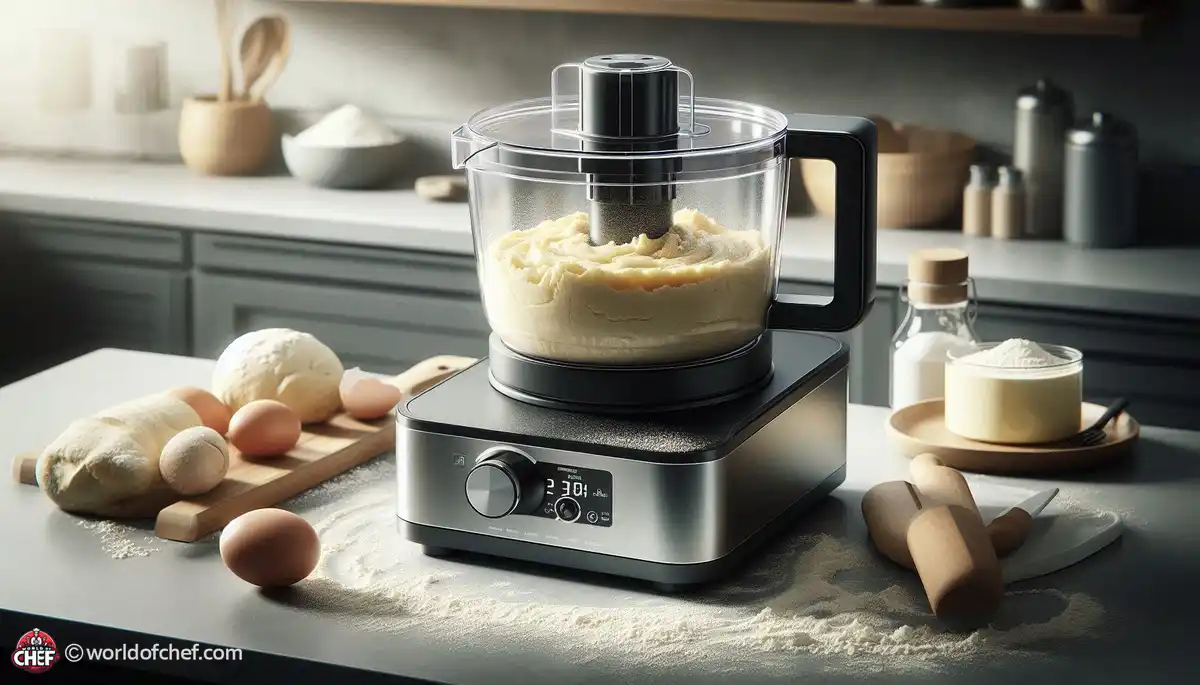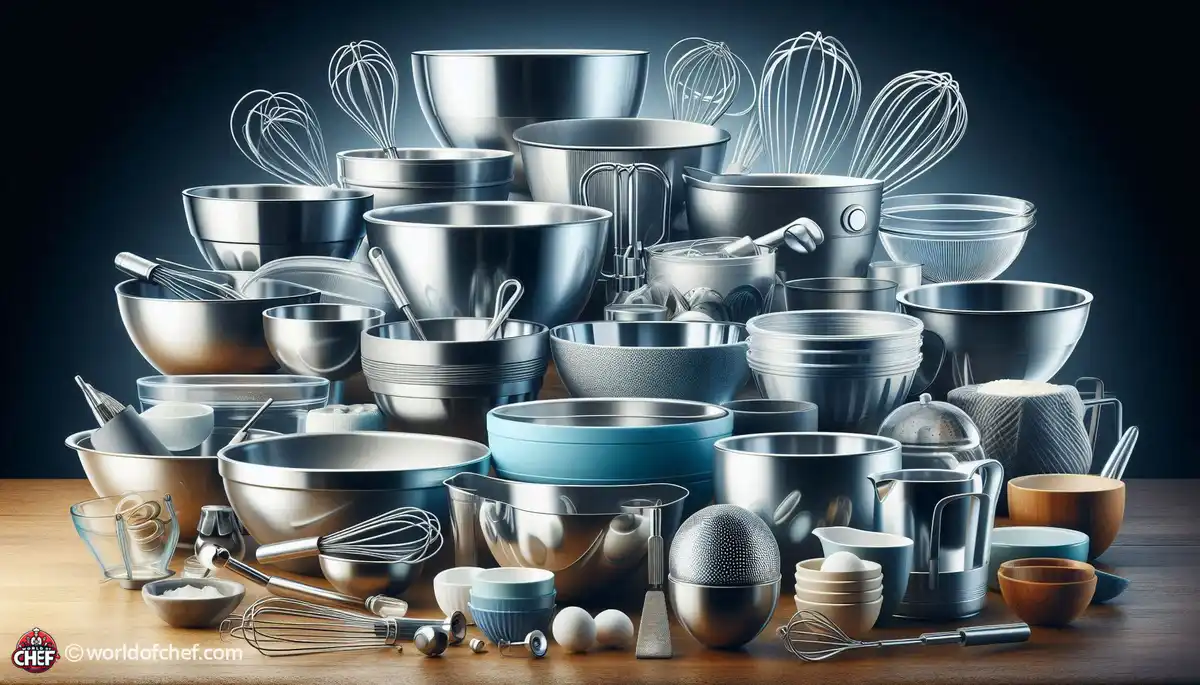
How to Choose the Right Peeler for Your Kitchen
Samantha Thames - Mar 27, 2025 - 12 min read


Proper storage is, well, an art, because it is one thing to put away leftovers, but using the right containers for what you have stored is actually important for keeping the foods fresh. Let's begin with learning how to take advantage of food storage strategies to keep every meal, just like the day when it was prepared. To start, let's delve into why food goes bad.
Food spoilage is, therefore a natural process caused by many things. Microorganisms like bacteria, yeast, and molds grow in certain environments; they decompose the food and let it decay. More than that, enzymatic reactions inside the food can possibly drain it of flavor, texture, and nutrition over time. So, these processes need to be grasped in order to avoid such spoilage and maximize the shelf life for your food.
The first role temperature plays is food preservation. Whenever inappropriate temperatures are used in food storage, they tend to become a breeding ground for hazardous bacteria. For example, perishable foods such as dairy and meats must be kept at refrigeration temperatures to slow the spoilage process. In contrast, room temperature hastens the spoilage process of most foods, especially fruits and vegetables. The influence of humidity is also profound, as foods that are kept in damp places can start to mold within a very short time.
Awareness of these spoilage factors is the first step toward the long life of your food. The control of temperature, humidity, and exposure to air will create an environment that will keep your food fresh for a longer time. The right choice of containers, tailored to specific types of food, will further enhance your storage strategy, and you'll be able to enjoy your meals at their best.
Proper food storage is much more than just keeping the food fresh; it is maintaining the food in a way that it remains safe and of great quality. Lack of proper storage of food may lead to food-borne illnesses, which add up to the health issues. Food should be stored in clean, appropriate containers since this minimizes risks of contamination and spoilage. Hygiene and orderliness in a kitchen ought to be ensured to avert cross-contamination for healthy eating surroundings.
Quality storage containers save you time and effort also in investment. Good storage of food items also encourages people to look for meals and reduces impulse buying. For instance, the clearness of the container forces you to check on quick notice what you have in the storage, leading you to smart grocery shopping and meal preparation. This would also imply reduced disposal, as food is unlikely to become wasted before you consume it.
Moreover, proper storage helps retain the flavor and texture of your food. Foodstuffs stored in inappropriate containers may gain other smells or lose their flavors after a specific period. With appropriate materials, you are ensured that your meals retain their original quality; hence, each bite tastes just like the first. Mastering how to store your food effectively leads to more fun and sustainable eating.
Glass containers are the perfect solution for food storage. They do not react, and no chemicals will leech into your food. It's especially useful for foods with an acidic nature, like tomatoes and Citrus Fruits. Cleaning up is easy and you can use it in the oven, microwave, or even the dishwasher, depending on the type. Being transparent, you know exactly what is inside. There's less of a chance that you'll forget about leftovers.
Probably, one of the primary reasons glass containers stand better above others is that they tend to close extremely tight. Several of them are usually found with airtight lids, which may seal it totally from reaching any air or moisture inside it, meaning food like grains or leftovers are bound to get dried if the lid does not reach or get sealed there. The slow nature permits your food to refrain easily from getting spoiled.
However, glass containers should be handled with care as they would break easily in case one drops it. For someone who loves the light weighted option, then glass container with a silicone sleeve is your best shot. These allow you to enjoy the full benefits of the two-durable functionality so that nothing goes bad on you for storing in it.
Plastic containers are so popular; they weigh less and also do not break easily, coming in different shapes, sizes to accommodate all those needs, most of which will find some way to meet all microwave-safe, freezers' safety, also being ready for the washing machine-just a set that accommodates all tastes at rather low prices.
When you are selecting plastic containers, make sure that they are BPA-free. BPA is a chemical used in some plastics that might leak into food, especially when heated. BPA-free means that your food will be safely stored. Most of the plastic containers come with airtight seals and this prevents the food from growing bacteria and being exposed to air and moisture.
However, it has to be said that plastics will stain and absorb odors given enough time. Flavored food such as curries or garlic will leave lingers to dishes to be cooked later on. To address these concerns, the best option would be to purchase costly food-grade plastic containers designed specifically for storing food. Making use of the right kind of containers can then take shape into a great adjunct for food storage.
Food becomes spoiled. Since food is left open or uncovered for a long time, it begins to oxidize because of high oxygen in the air that can continue to alter its natural flavor, texture, and look. Because of oxidation, bacteria and even mold are flourishing. The product gets minimal air exposure with airtight containers, but if a person needs fresh food, then it is necessary to use them.
Moisture, the other vital factor besides oxidation is a case in point. Grains and nuts absorb water vapor from the environment; that's the reason food deteriorates. An airtight jar is the most excellent tool against water molecules getting inside; thus dry foods retain crunchiness and freshness. Still, the high saturation humidity makes food degradation earlier compared to other zones which have less water.
Choose the right airtight containers. Ones with a silicone gasket or the ability to lock down give you that tight seal you want. Glass and some great-quality plastic containers come that way. Investing in quality airtight containers extends the shelf life of the pantry staples and leftovers that you might otherwise have.
Testing if the container is really airtight could be easy. Most of the containers can be tested in simple ways: you should fill the container with water and close it. Next, turn the container upside down and look for a leak from the container if that happens, then the seal might not be effective, and maybe you'll have to consider another different choice. It would prevent such shocks as spoilation.
Another method is inspecting the integrity of the seal. Rubbers tend to wear out after several repetitions or exposure to heat and become less efficient. Examine the rubber gaskets, see if it is worn out or has cracks. If so, replace that container to store food.
Finally, assess the weight of the lid when closed. An airtight container typically closes with a snug and secure fit. If the lid is loose or seems like it does not close entirely with the base, the lid may not offer the level of seal that you desire. Paying attention to testing and checking your containers for storage will significantly impact your food storage.
The right size of storage containers is very crucial for effective food preservation. Containers that are too large can trap excess air inside, which may lead to spoilage. Containers that are too small will not accommodate the food well, causing it to be squished or damaged. It is therefore essential to strike a balance in ensuring that your food remains in the best possible condition.
What is more, the right-sized containers can really complement the organization technique. Using well-fitting containers in your pantry and fridge makes space utilization ideal and easy to search for what you need. Stackable containers are best for small kitchens because you can use plenty of space vertically. This is great because it looks nice but also turns you into someone who doesn't get easily cluttered.
Consider also how you usually cook or eat. If you cook in bulk, then a larger container would be in order for storing leftovers. If you store portions separately, then the smaller one is the way to go. Assessing your habits in cooking will determine which size is most appropriate, thus allowing you to fit your lifestyle into an efficient storage solution.
You can sort your food storage containers by size to make cooking and meal preparation a little smoother. A dedicated drawer or shelf for the containers, separated by size, is always a good idea. You can easily pick out the right size of container when you need to store any food. Stackable containers save space and allow easy access to whatever you are looking for without digging through a disorganized mess.
You would also label every container you hold to keep track of what is in it and the date of storage, which helps a lot when using older contents first in order to cut down the amount of wastes produced. A little effort at home can go quite a way in keeping fresh food with awareness of everything available to you.
Finally, you should always assess your containers. Sometimes, they get damaged, and sometimes your needs change. Whatever the case, cleaning through your stock enables you to remove useless containers and make space for others. A clean and fresh food storage improves your experience in the kitchen and also its efficiency.
Different types of foods have different storage conditions with regard to their freshness or shelf life. Herbs grow quite well in small containers that allow for many air passages, whereas other leafy green vegetables demand a more moist condition than others. Specialty containers specific to certain foods create that ideal condition required by such food. Some investments towards these containers can make certain ingredients last longer in use.
A good example of one is a grain storage bin, which comes with added features that will prevent the occurrence of moisture and pest infestation, ensuring that your rice, quinoa, or oats remain fresh. Proponents of produce savers further claim that they allow your fruits and vegetables to retain their crispness. Their containers come with vents you may open or close at whim, which can manage air flow depending on your storage.
Specialty containers are very useful for meats and cheeses since vacuum-sealed bags eliminate freezer burn, keeping the contents fresh for longer. Specialty containers ensure that your food is kept in a way that takes care of its specific needs, hence quality and safety.
Pay extra attention to the type of material, based on the specialty containers you will need. A porous bag like mesh or perforated plastic is best suited for produce, such as fruits or vegetables. Protein should be kept in vacuum bags. You will know that each kind of food has different properties, and thus it will help guide your options and augment your food preservation strategies.
Quality also matters. Specialty containers of higher quality can eventually pay for themselves by lengthening the shelf life of your food. Airtight seals or humidity features in a container might be important. A little reading and research will help you to get the best containers that will suit your needs.
Finally, think about the convenience factor. Easy-to-clean containers that can be stacked and have options for clear labeling can make your food storage routine a breeze. Your goal is to create a system that's not only effective but also something you can maintain in your daily life. The right specialty containers will make all the difference in maintaining the quality of your ingredients.
Extension of shelf life requires a few basic food storage guidelines. All foods must be placed in clean, dry containers with no residues to encourage spoilage. Moreover, cool cooked foods down prior to placing them in storage because adding warm foods creates condensation that encourages bacterial growth.
You can date the containers for you to know how long it has been since the food was prepared. It is especially helpful in the leftovers, which you can then enjoy at their best flavor. You can also adopt a first-in, first-out system, where older items are used before newer ones. This simple organization method can help you avoid waste and make the most of your food.
Another best practice is checking contents in your pantry and the refrigerator regularly. This avoids losing items at the back. Nothing goes to waste and you can even make use of an inventory list. This helps in tracking your supplies and those which must be consumed in time.
Just the right containers will not alone ensure the quality of your food. Temperature is a prime point to be reminded of; always keep your perishables inside the refrigerator and never forget to check and maintain the temperature level of your fridge. In general, most refrigerators should be at 37°F (3°C) for optimal freshness. For prolonged time periods, the temperature of your freezer should be 0°F (-18°C).
Avoid overstuffing your refrigerator since it will limit the airflow within it and results in improper cooling. Adequate circulation of air ensures that the food is kept at the required temperature, and this is what helps to keep food quality. Keep your refrigerator and pantry in such a way that the perishables are easily accessed, lessening the likelihood of them being forgotten and left to spoil.
Lastly, use absorbent stuff like paper towels to store your fruits and vegetables in bins. They can help draw out that extra moisture thereby preventing the growth of mold and the freshness of fruits and vegetables can last a longer time duration. The above tips can enhance the overall food storage strategy thereby getting fresher meals for a longer time.
The shelf life of food with proper storage containers is not only smart but also sustainable. Know that the science behind food spoilage can reduce waste by a lot, and therefore save money. Glass, plastic, airtight, or specialty containers-you have the right choices for fresher, tastier meals. Take up these practices and enjoy knowing that you have well-preserved food to savor every single bite.

Samantha Thames - Mar 27, 2025 - 12 min read

Louis Saul - Jan 15, 2025 - 11 min read

Emery Donley - Oct 26, 2024 - 14 min read

Dennis Hague - Oct 26, 2024 - 14 min read